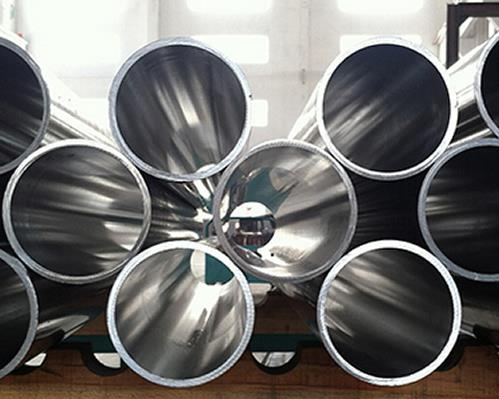The German Industrial Standard (DIN) is a globally recognized and authoritative standard system renowned for its rigor, precision, and high quality standards. In the steel pipe industry, DIN standards have long served as a crucial technical basis and quality assurance tool in global manufacturing, engineering construction, and trade. Despite the growing popularity of European (EN) and International (ISO) standards, many DIN standards have either been adopted as EN standards (existing as DIN EN) or their technical content remains a recognized industry foundation.

I. Core Features and Importance of DIN Standards
Quality Assurance: DIN standards provide extremely strict and clear regulations for steel pipe dimensional tolerances, chemical composition, mechanical properties (such as tensile strength and yield strength), process requirements (such as welding and heat treatment), and testing methods (such as hydrostatic testing and non-destructive testing), ensuring product reliability and consistency.
Global Recognition: Due to Germany's leading position in mechanical engineering and the chemical industry, DIN steel pipe standards are widely adopted and recognized worldwide. Many international projects, particularly in demanding industries, specify DIN steel pipe. Interchangeability and Compatibility: Precise dimensional standards ensure the interchangeability of steel pipes and fittings (such as flanges and elbows) produced by different manufacturers, streamlining procurement, warehousing, and installation.
Safety Basis: These standards serve as the safety foundation for the design and manufacture of many pressure equipment, load-bearing structures, and transmission pipelines. Adherence to DIN standards is a key step in meeting relevant European and global safety regulations (such as the Pressure Equipment Directive (PED)).
II. Examples of Important and Commonly Used DIN Steel Pipe Standards
The following are some historically and currently important and commonly used DIN steel pipe standards:
1. Seamless Steel Tubes
DIN 2448 / DIN 2458: These two standards are for seamless steel pipes used in piping systems and are often presented as a pair.
DIN 2448: Specifies the nominal diameter (DN) and outside diameter of pipes.
DIN 2458: Specifies the wall thickness series for pipes (e.g., the wall thickness corresponding to materials such as St37.0, St44.0, and St52.0).
Applications: Widely used in general structures, low-pressure fluid transportation, machinery manufacturing, and other non-extreme service environments.
DIN 1629: Seamless steel pipes for higher pressure requirements. Parts 1 to 4 cover non-alloy steel pipes of varying quality grades, with more stringent requirements for chemical composition, mechanical properties, and testing. Common grades include St37.0, St44.0, and St52.0.
DIN 17175: Seamless steel pipes for high-temperature service. This key standard for power plants, boilers, and superheaters specifies requirements for steel pipes used in high-temperature and high-pressure environments. These pipes are typically made of alloy steels (such as 15Mo3, 13CrMo4-5, and 10CrMo9-10).
EN 10216: DIN 10216 has replaced and expanded DIN 1629 and DIN 17175, becoming the mainstream European standard for seamless steel pipes for pressure applications.
2. Welded Steel Tubes
DIN 2460 / DIN 2461: Standard for longitudinally welded steel tubes for conveying fluids and gases.
DIN 2450: Standard for spirally welded tubes.
EN 10217: DIN EN 10217 is the European standard for welded steel tubes for pressure purposes and has gradually replaced many older DIN standards for welded tubes.
DIN 2391 / DIN 2393: High-precision seamless and welded steel tubes for precision mechanical manufacturing. These tubes feature extremely close dimensional tolerances and smooth surfaces and are commonly used in hydraulic and pneumatic cylinders, automotive parts, and other applications.
DIN 2391: Seamless precision steel tubes.
DIN 2393: Welded precision steel tubes (typically resistance-welded or laser-welded).
3. Stainless Steel Tubes
DIN 17456 / DIN 17457 / DIN 17458: These are older standards for seamless and welded austenitic stainless steel tubes, specifying the performance requirements for common materials such as 1.4301 (304) and 1.4401 (316).
EN 10296-2: DIN EN 10296-2 is the European standard for welded stainless steel tubes for mechanical and engineering applications.
EN 10217-7: DIN EN 10217-7 is the European standard for welded stainless steel tubes for pressure applications.
III. Evolution from DIN to EN/ISO
With the progress of European integration, CEN (European Committee for Standardization) has developed unified European standards (EN) to eliminate technical trade barriers. Under the agreement, all EU member states (including Germany) must adopt EN standards and withdraw conflicting national standards.
Therefore, many traditional DIN standards have been superseded by DIN EN standards. For example:
DIN 2448 has been supplemented and referenced by standards such as DIN EN 10220 (General Tables of Steel Tube Dimensions and Weights per Unit Length).
DIN 1629 has been superseded by the DIN EN 10216 (Seamless Steel Tubes for Pressure Purposes) series of standards.
The content of DIN 17175 has been incorporated into DIN EN 10216-2.
In actual business and engineering, you may see both pure DIN numbers and DIN EN numbers. For critical applications, be sure to confirm that the referenced standard is the latest valid version.
IV. How to Interpret DIN Standard Numbers
DIN XXXX: A purely German national standard that may have been withdrawn or superseded by a newer standard but is still used in some areas.
DIN EN XXXX: A European standard adopted by Germany with full national standard status. This is the most common form.
DIN ISO XXXX: An International Organization for Standardization (ISO) standard adopted by Germany.

